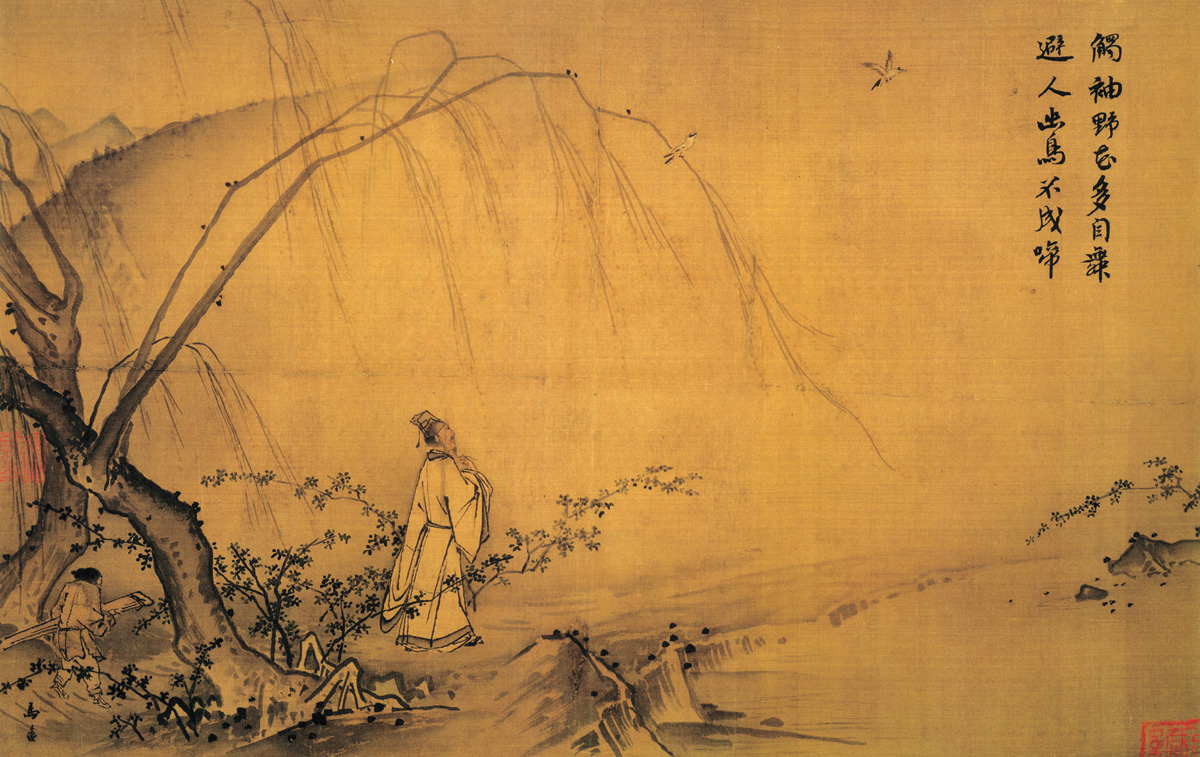Three tips for becoming a better China-watcher
China is a complex, dynamic, immense country, to which some scholars have devoted their entire lives, attempting to understand it. What chance does the China-watching greenhorn have? Start with this guide — which includes good reminders for discerning information-consumers everywhere.

China plays prominent and expanding roles in many areas of U.S. policy, from trade to North Korea to climate change. As this expansion continues, more people in the news and policy worlds may be interested in becoming savvier China-watchers.
However, this country presents unique obstacles over which prospective sinologists often stumble. Here I offer some simple guidelines to help anyone interested in learning about China, whether as an informed observer, a generalist policymaker, or an aspiring specialist.
1a. Learn Chinese
The best way to understand China is to read Chinese sources and talk to Chinese people. But if you haven’t quite mastered the language yet…
1b. Learn from those who know Chinese
Draw on Chinese sources via translation or others’ reportage. The China Project and the sources listed in its directory of China websites offer invaluable places to start. Many Chinese outlets and individuals publish in English as well. Some of the most important are the English-language versions of official state media outlets such as Xinhua and the People’s Daily. These publications are not intended to represent the full range of discussion and debate in China, nor can they be assumed to be identical to their Chinese-language editions. Nonetheless, they are invaluable windows into the terminology, perspectives, policies, and personalities on which the Chinese Communist Party wants readers to focus. They should therefore be read as such, by focusing not just on the explicit claims they make and where they are directing your attention, but also on which topics and perspectives they omit and, crucially, why they might do so.

Also, pay attention to how any authors writing about China draw on Chinese sources. If an article relies on no Chinese sources to make sweeping claims about China, for instance, it’s best to be skeptical. Relying solely on second- or thirdhand accounts of Chinese sources can be just as problematic, especially given that conventional wisdom about China, as Bill Bishop has pointed out, can, unfortunately, become quickly entrenched.
For instance, in June, Popular Science ran a story headlined, “China’s new submarine engine is poised to revolutionize underwater warfare.” It was republished by the likes of the South China Morning Post and the National Interest, the latter of which used the words holy grail in its headline — essentially quoting itself, because no one else was saying it. In fact, the entire story turned out to have been based on comments supposedly drawn from an interview with a Chinese scientist — comments that the scientist never made, as the blog PLA RealTalk cogently argued:
It appears that a combination of poor translation, and/or a lack of anyone actually tracking down the original video source, sprinkled with an intriguing display in the video, was a cause for this debacle.
Had the authors of these pieces consulted the original Chinese source, a misleading (and worrisome) narrative about China’s naval prowess would have been far less likely to develop.
2. Understand how good information about China is produced
Good information about China is relatively hard to obtain, doubly so because it is channeled through a limited set of journalists, researchers, analysts, and propaganda outlets with the expertise needed to bridge the gaps between China and the outside world.
Smart China-watchers thus also carefully assess their sources by asking two questions. One, how credible is the source itself? Two, what does the information provided actually mean? Both of these assessments must be rooted in an understanding of China’s historical, societal, and political context.

There is no simple formula for gauging the credibility of information about China. Given the scarcity of quality information, smart China-watchers always ask the degree of a source’s familiarity with China. Proficiency in Chinese is a good indicator — it means the source is likely to have engaged with an informative number of Chinese people. Time spent in China is also a good indicator, given that the country’s media landscape, business culture, and norms of interpersonal interaction differ from most Western contexts.
For example, personal, face-to-face interaction is even more crucial to developing reliable sources in China than it is elsewhere. Furthermore, Chinese norms for prose mean core claims often appear buried or bafflingly idiomatic (such that knowing what they say is not at all the same as understanding what they mean). Censorship pressures on individuals can exacerbate these challenges, in addition to creating a highly restricted media environment that is entirely alien to many Americans. Norms of public debate also differ in China; in the case of the Chinese military, for example, policy discussions in military publications generally indicate the bounds of internal government debates, rather than broader public sentiment.
One example in which deep familiarity with China was crucial to dispelling an influential myth is the story of the U.S. military’s “AirSea Battle” doctrine. In part a response to China’s purported adoption of a military strategy of “counter-intervention” or “anti-access/area denial (A2D2),” AirSea Battle generated fierce internecine fights in the U.S. military and increased concerns in China about U.S. intentions. The thing is, while China was developing some capabilities along these lines, it made no such overall change to its military strategy. As demonstrated by two professors with extensive experience studying China, misidentifying the focus of China’s military strategy like this “sustain[ed] a flawed assessment of China’s military modernization”; it also “overstate[d] the role of the United States in Chinese military planning and contribute[d] to…growing security competition in the region.” Notably, these professors punctured this myth using a close reading of Chinese-language publications, which itself was informed by their deep knowledge of how military strategy in China is developed and reported.
While assessing the actual meaning of Chinese sources can be extremely difficult without extensive experience, China experts are, fortunately, usually willing to help. Many China experts have produced detailed guides to understanding various aspects of modern China, including Analyzing the Chinese Military, The Columbia Guide to Modern Chinese History, Decoding the Chinese Internet, “Guide on Researching Chinese Mass Media Law,” “Researching the History of the People’s Republic of China,” and “Who Speaks for the Chinese Government?” Email newsletters from experienced China hands have also become invaluable for helping to separate the wheat from the chaff of China analysis and reporting, and they often provide informed commentary in addition to useful sources — the best include Changpian, China Politics Weekly, Chinafornia, The Month in U.S.-China Relations, Sinocism, The China Project, Trivium Daily, and U.S.-China Week.
3. Beware of easy but inappropriate comparisons
Comparison can be one of the best ways to make sense of an unknown, but some of China’s peculiarities make finding appropriate comparisons challenging. For example, Chinese organizations tend to emphasize ambitious proposals and anticipated successes, without furnishing the information that outside observers would need to assess the progress or outcomes of these plans. As veteran China-watcher Ian Johnson puts it, “China is the land of soft openings: Projects are first announced to big fanfare… and only then filled with content,” whereas “Westerners like to see projects…envisioned and planned thoroughly, then completed according to that design.” Differences of approach like this can lay traps for unwary China-watchers who assume projects everywhere follow the same basic progression.

With regard to Xi Jinping’s Belt and Road Initiative proposing investments across Asia, many, such as Harvard professor Joseph S. Nye, have openly pondered whether it is “more public relations smoke than investment fire.” While the initiative is relatively new and hard to assess, it is clear that some components are already faltering due to controversy or poorly planned investments. When organizations outside China are open about the implementation of similar investment plans — which inevitably face setbacks — analysts can be tempted to compare imperfect foreign outcomes with promising but unproven Chinese plans, problematically treating the latter as if they were fully and smoothly implemented. Many of China’s ballyhooed eco-cities, for instance, have “largely been scrapped” despite initially ambitious announcements.
A less well known example occurred in early 2015, when China’s largest state-owned agricultural development enterprise announced plans to massively increase its annual haul of Antarctic krill, from roughly 30,000 metric tons per year to as much as 2 million tons. This plan was first reported in the state-run China Daily, and it rapidly spread through foreign news outlets. Notably, however, China’s annual krill catch actually fell from 2013–14 to the 2014–15 season, though it recovered the next year. China’s trajectory for krill fishing therefore does not square with the 2015 announcement, and practical considerations make any sudden increase unlikely — China only registered seven krill fishing vessels for 2017, for instance, and increases of such size must be approved by the 25 members of the Commission for the Conservation of Antarctic Marine Living Resources. Skepticism of this announcement was therefore justified, but it didn’t stop a wide range of observers from greeting this announcement with fanfare. China still wants an increase in its krill fishing quota, but even several years later, the content of its plan to do so remains unclear.
The general problem of finding appropriate comparisons in the study of China also arose in a recent comparison in The National Interest of the U.S. and Chinese militaries. The author examined ways in which China’s People’s Liberation Army (PLA) plans to respond to the changing global security environment, ultimately concluding that the PLA’s plans will be effective. The author then went on to argue that the U.S. should take a page from China in this area, claiming the U.S. military’s “entrenched bureaucracy” has made it unable to effectively adapt to the changing security environment and prepare for the “future of warfare.” However, this piece erred in comparing the allegedly poor outcomes of actual U.S. attempts to adapt with China’s as yet unrealized plans to adapt. By doing so, it waved away the substantial challenges involved in actually implementing policy, as well as the particular obstacles that China’s own famously entrenched bureaucracies will pose to implementing the PLA’s plans. This kind of easy but inappropriate comparison, therefore, tells us little about how successful either China or the U.S. has actually been in preparing for the future of warfare.
The recent flurry of articles calling attention to China’s focus on artificial intelligence research, too, suffers from inappropriate comparisons. For example, one Washington Post headline last year blared that “China has now eclipsed us in AI research,” basing this warning in part on a comparison: “China has effectively eclipsed [the U.S.] in terms of the number of papers published annually on the subject.” But let’s remember that China has “an industry of plagiarism, invented research and fake journals that Wuhan University estimated in 2009 was worth $150m, a fivefold increase on just two years earlier.” (The U.S. is no stranger to such problems itself.) While this situation appears to be improving, simply comparing the number of articles published in each country without an appreciation for context does not tell us much about how much good research either country is doing. Choosing effective, illuminating points of comparison that effectively take local context into account is difficult but crucial.
Conclusion

In many ways, China is a country like any other, to which all the usual rules of good analysis apply — as the China-watcher Howard French has said, “to exoticize China and to see it as some kind of outlier…would be to misunderstand China.” However, paradoxically, one of the ways it is like every other country is that observers must take its idiosyncrasies seriously. Above, I have laid out a few of the unique challenges to observing China, in hopes of helping those interested in becoming more effective China-watchers.
Good luck.





